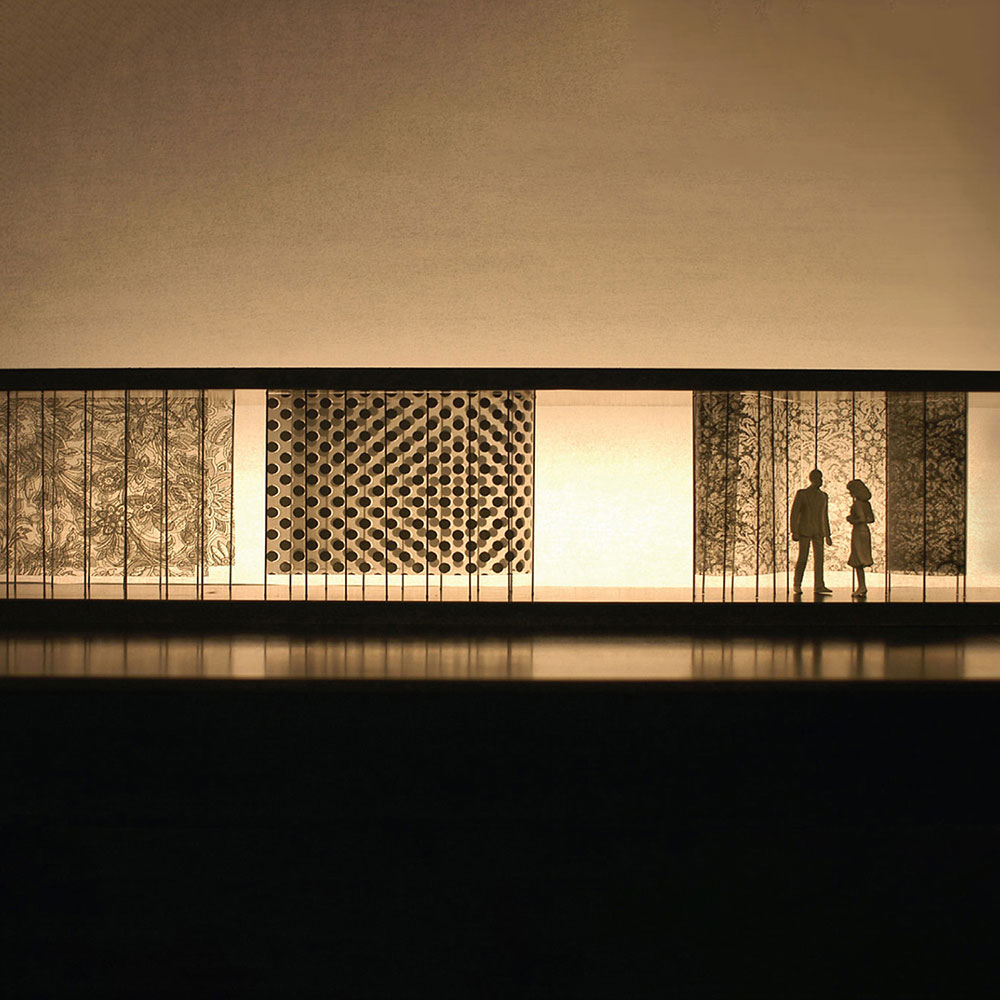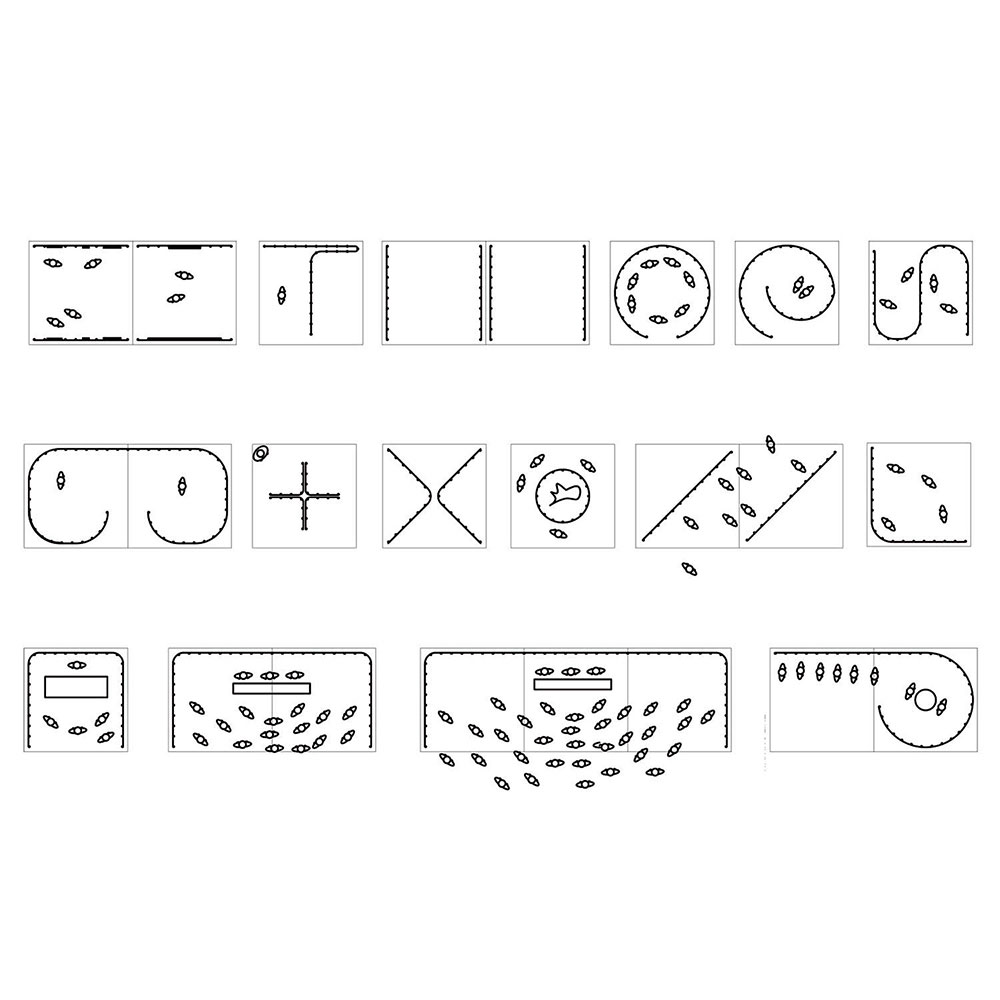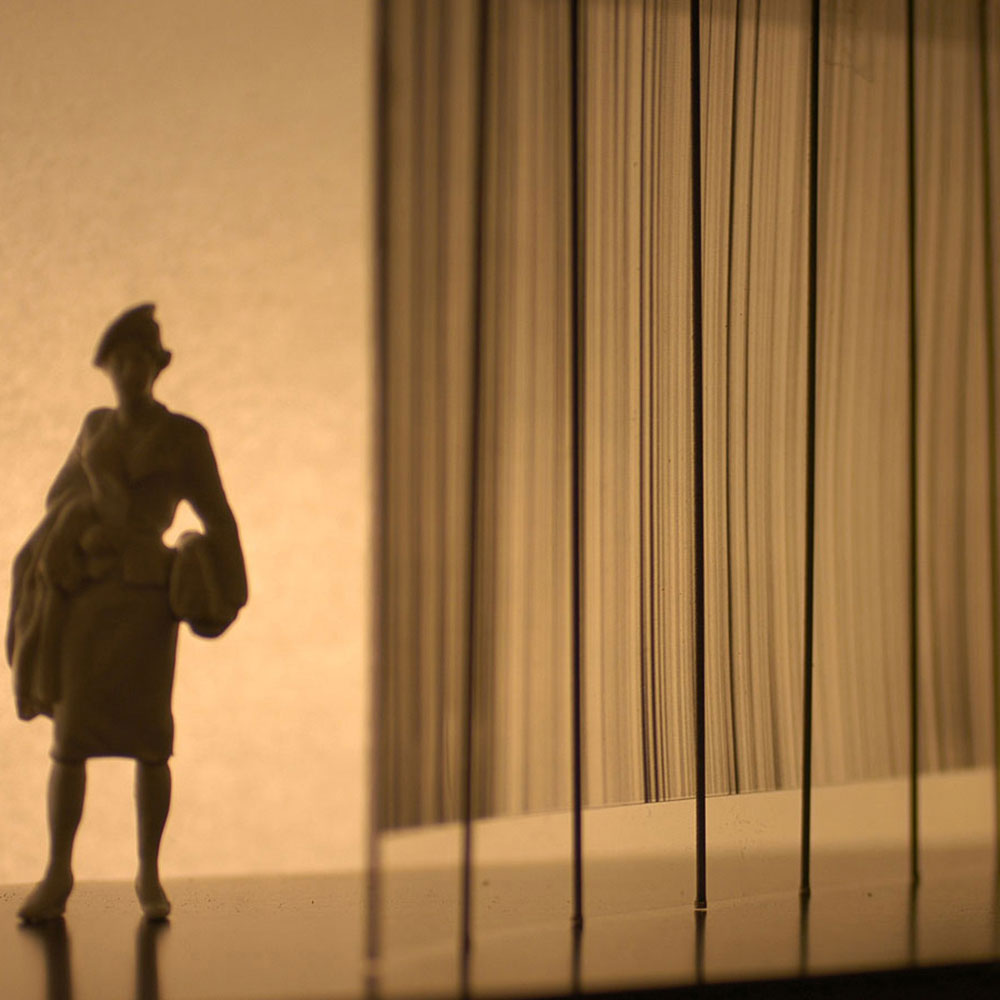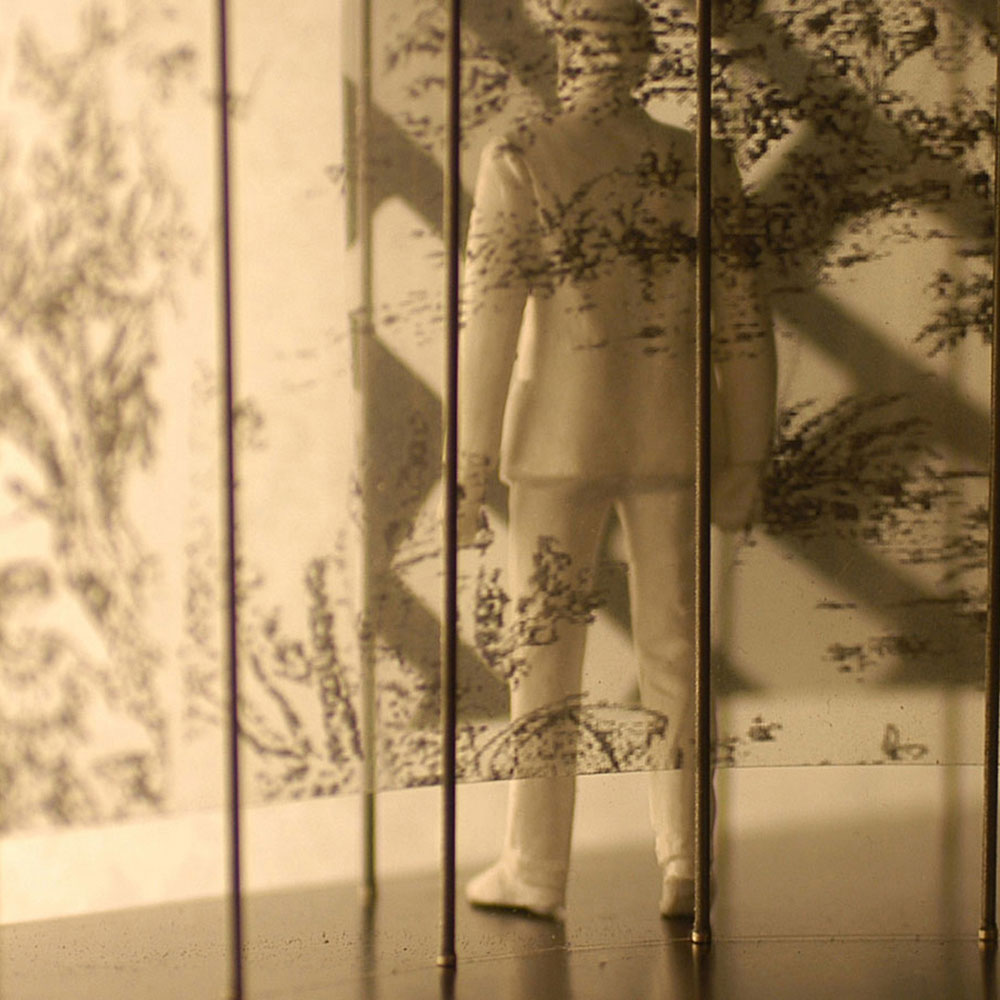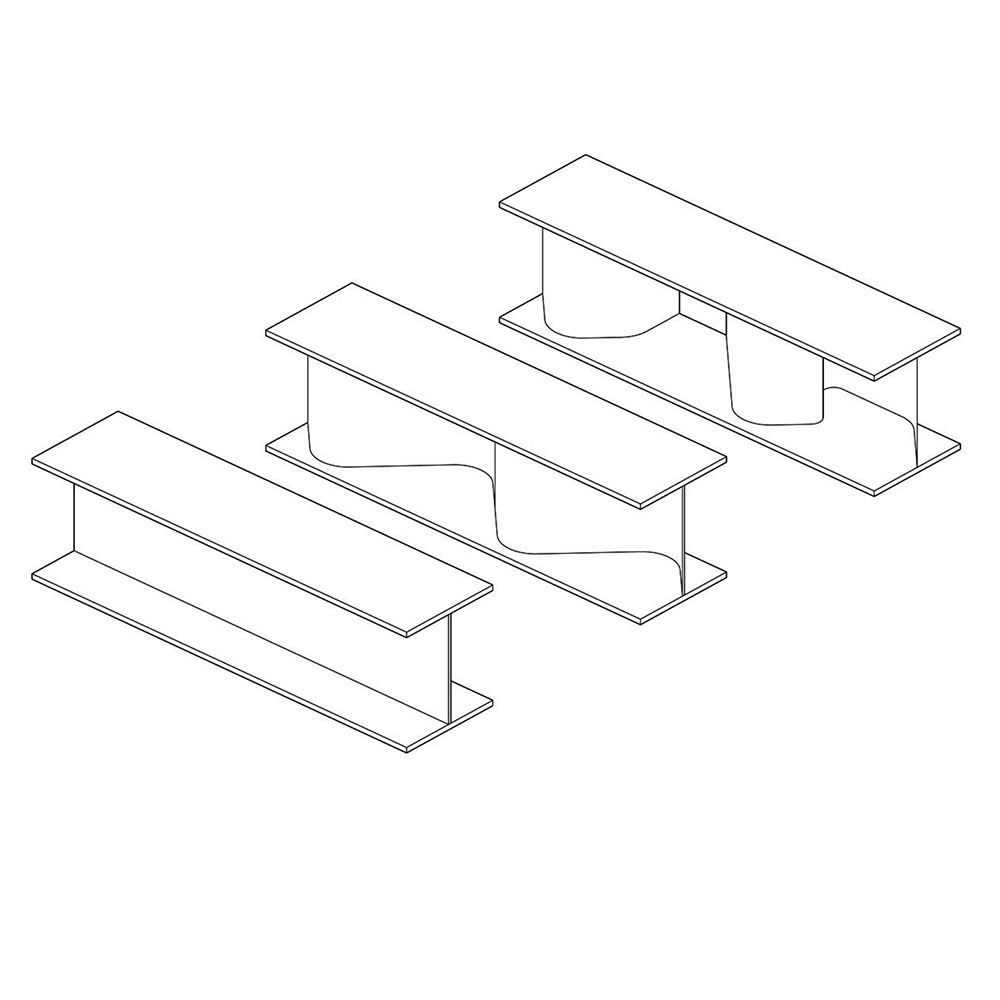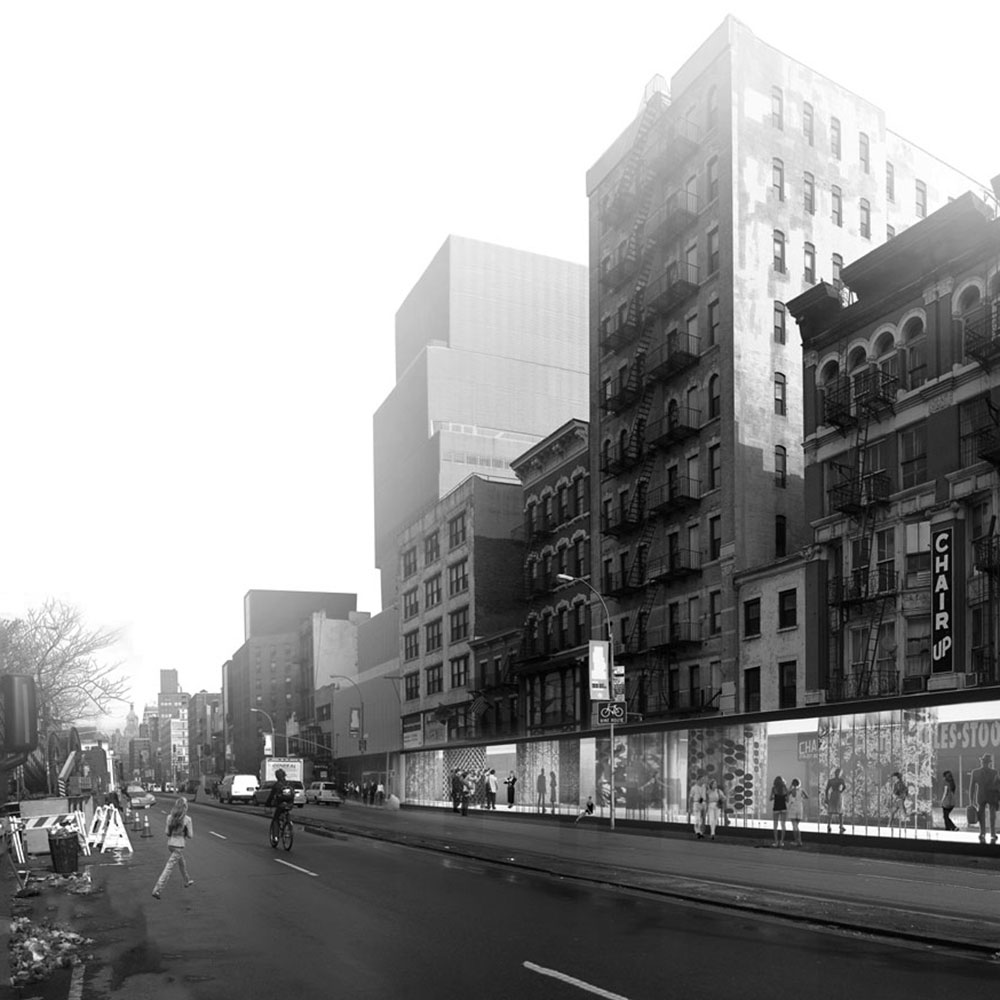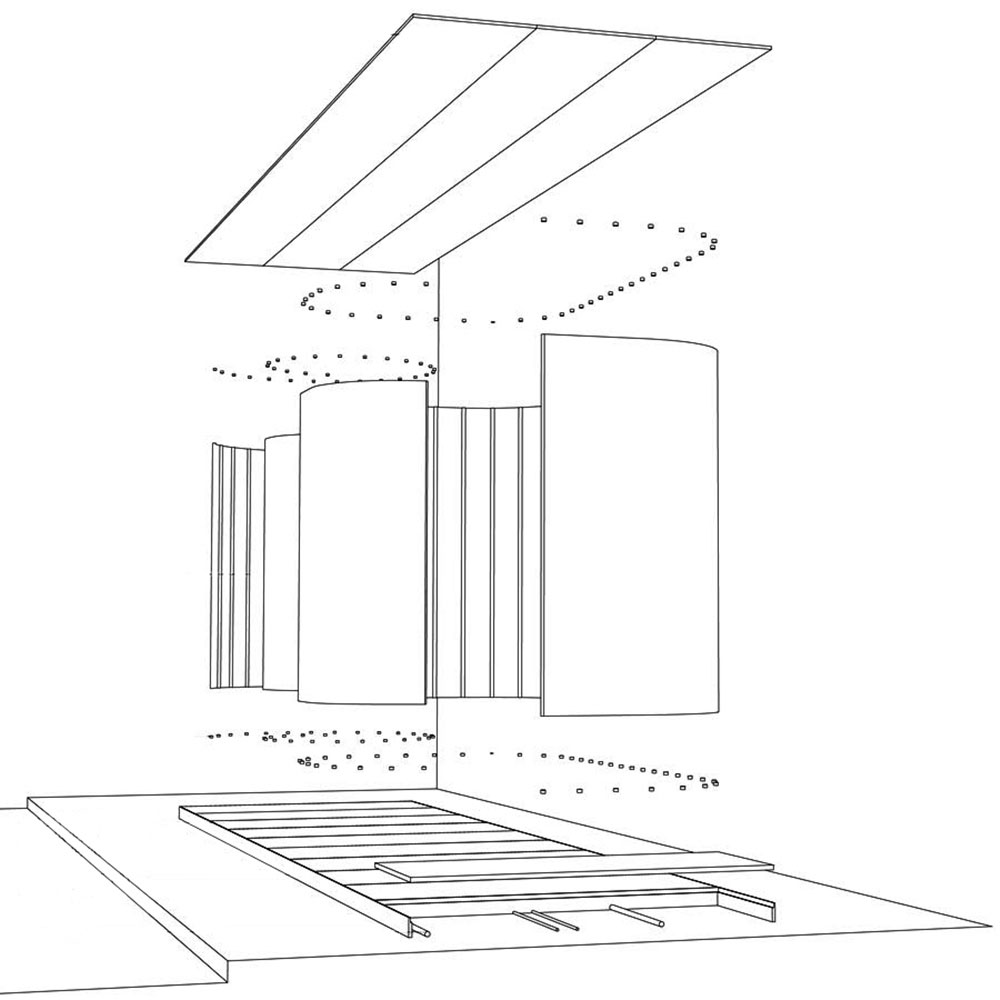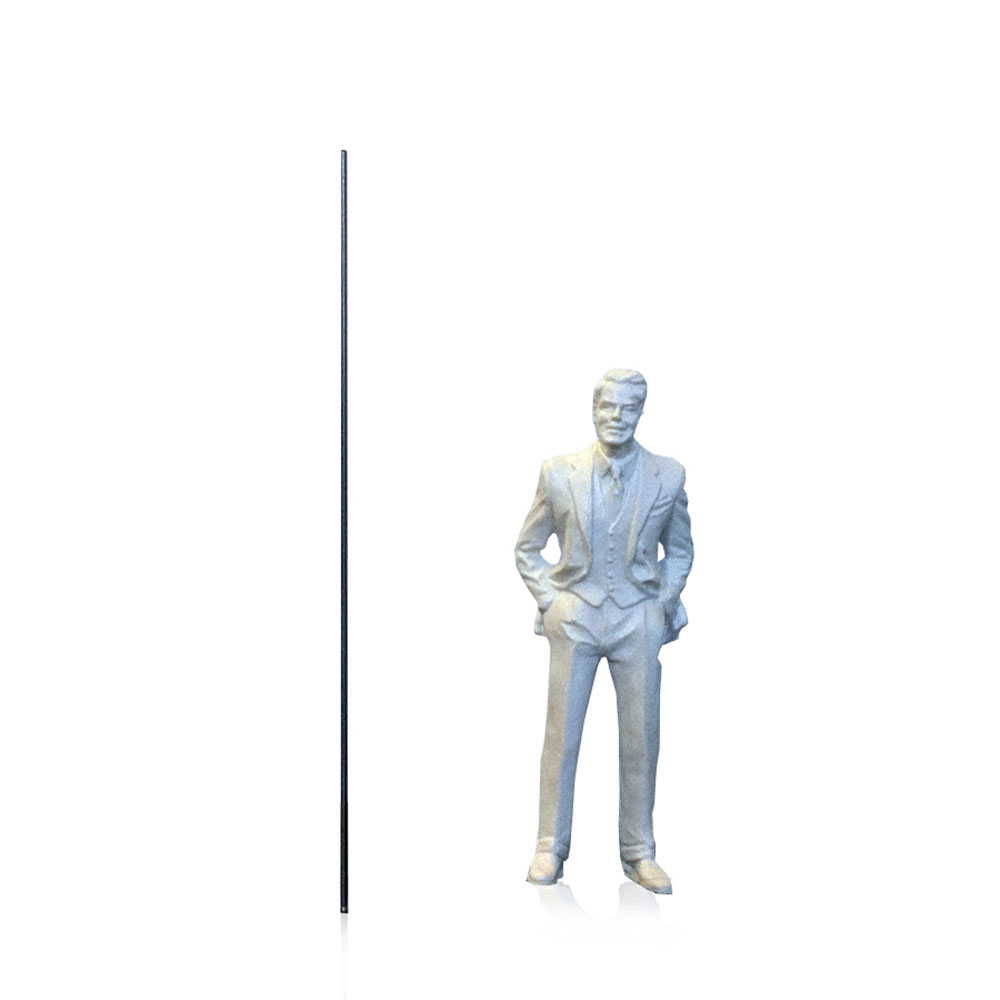Stick is literally and figuratively a magnetic solution to the “repellent” street fairs – same food, same traffic, same tent – that Manhattan residents are used to. The ability to adjust the scale of discrete components resolves the finite capacities of typical street fair membrane structures, while the materiality of the primary ribbon component ensures both flexibility and portability, allowing for varied daytime and nighttime programming.
Stick consists of two horizontal, magnetic surfaces separated by space-defining, magnetic-edged ribbons. Regularly spaced slender columns, or sticks, are sleeved into each ribbon, where end columns are structurally fixed to the floor and ceiling, contributing to the lateral bracing. The multitude of remaining columns has magnetic heads and bases, whose connections allow the ribbons to stick in place, and which permit column relocation and offer infinite adjustment to the ribbons. The sheer number of columns reduces the distributed loads, resulting in smaller column diameters that increase the transparency of the ribbons. Thus, with fewer fixed connections between modular components, the floors, ceilings, and ribbons can be independently emphasized or reduced without affecting adjacent elements.
When a singular disc permanent magnet at the end of a column is attracted to a steel plate, the magnet behaves like a singular bolted connection. Alone, this connection is not sufficient to resist lateral forces; however, within these myriad proposed arrangements, the columns begin to act as a serpentine wall, withstanding lateral forces due to the form of the ribbon, as well as the number of columns. In order to protect against the unsavory structural condition of one continuous straight wall, the structure itself suggests several fixed points (the beginning and end of each ribbon), which pass through the base and ceiling to a bolted moment connection – while the remaining columns are free to move in any condition.
Stick can be arrayed linearly, exceeding lengths of 200 feet to become increasingly, unmistakably legible against the distracting streetscape of the city. As length develops, the planar floor and ceiling further frame the curvilinear, customizable, polychromatic ribbons. At night, the ribbons invitingly glow from within.
Client: Storefront for Art and Architecture
Program: Cultural, Pavilion
Status: Complete
Size: 2,000 SF
Location: New York, NY
Team:
Architect: Abrahams May Architects (Kyle May and Scott Abrahams)
Images: Kyle May, Scott Abrahams
